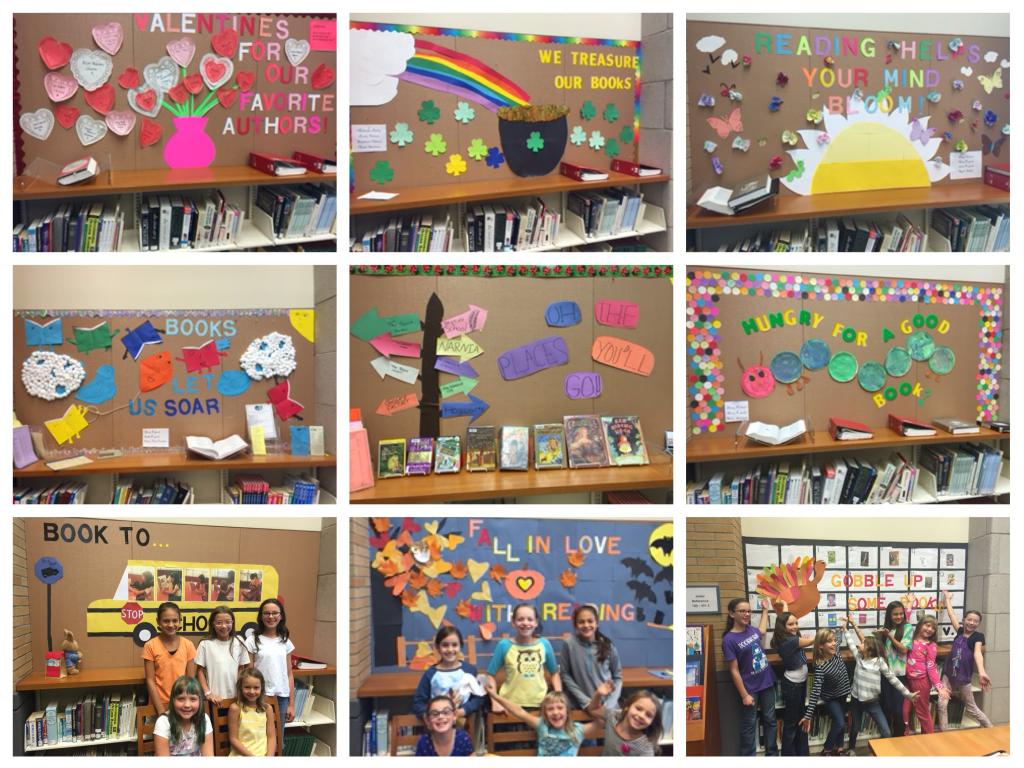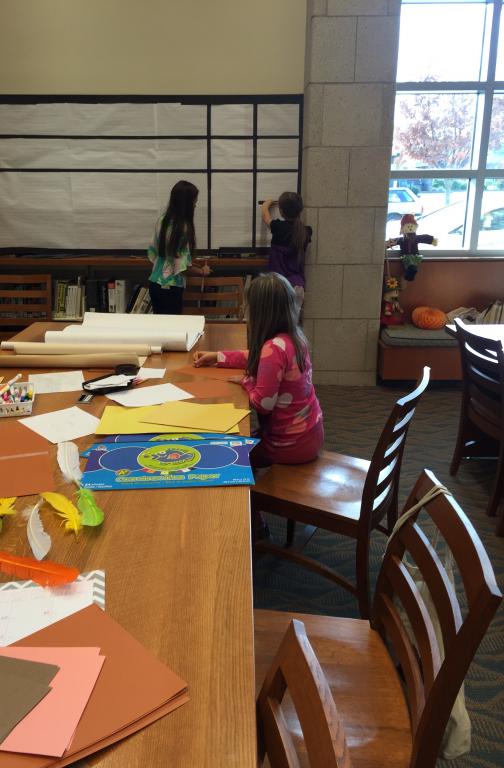Library Design Squad: Encouraging Creativity, Community, and Communication
At the Medford Public Library in Medford, Oregon, Children’s Librarian Ellie Hilton and Library Associate Marne Kapule created a targeted program for 7 to 12-year-olds to meet the needs of the elementary-age child. Modeled around the three guiding principles of the Jackson County Library Service District’s Strategic Plan, this program helps children “Learn, Connect, and Grow”. These principles are especially important for Children’s Services. This program, called “Library Design Squad,” invites children to decorate a bulletin board in the Children's Department each month. Through their participation, attendees are able to learn and hone creative skills, connect with their peers and community, and experience personal growth in areas such as cooperation, collaboration, planning, and communication. The group’s work is focused on the design of one bulletin board once a month, but this program could easily be expanded or made smaller depending on financial and staffing parameters.

Childhood can be one of the most imaginative and creative stages of life. As children gain strength as readers, they are opened up to incredible imaginative potential that can reflect in other mediums. Arts and crafts are very appealing to young children, and serve as a wonderful outlet for creativity while also advancing important goals. Toddlers learn to hold crayons and cut with scissors as a way to practice hand-eye coordination and improve dexterity. Older children receive a chance to practice art skills and flex their creative muscles.
To foster the creative energy of elementary-aged children and encourage community engagement, the Medford Public Library started the Library Design Squad program. It invites children ages 7 to 12 to come to the library on the last Sunday of each month from 1-3 pm and spend two hours designing and decorating a bulletin board, which will be enjoyed by the public until the next program date.
The decorated bulletin board is in a central and highly visible location. It has become one of the most popular displays in the children’s department, and patrons regularly praise it. What is unique about the board is that it is designed and executed entirely by children. Program participants collaboratively construct a design plan and then execute the design themselves. Staff members provide the group with a basic theme or a slogan for the board and make design materials available. Materials include: letter cut outs for the chosen slogan, construction paper of many different colors, markers, crayons, staplers, tape, scissors, and access to online and printed resources and other artistic mediums (they have used paint, string, tissue paper and photos of themselves, to name a few).
The typical schedule of the program is:
1:00 – 1:10 pm: Arrival phase. Children trickle in, meet and greet each other, and find a seat at the planning table.
1:10 – 1:30 pm: Planning phase. Children fill out a planning worksheet with their initial ideas based on the provided slogan. Then, they create an initial sketch of how they would wish their idea to be reflected on the board.
1:30 – 1:40 pm: Collaboration phase. After they have isolated their initial ideas, the children share their ideas with each other. At this point, staff encourage children to look for any overlap, and they start to make compromises together. They adapt elements of their own ideas to fit in with the ideas of others in the group, and they vote on elements to be included in the final design. Children are encouraged to make sure that every member in attendance has at least one element that they have chosen reflected in the final design. They then fill out the final planning page, which represents the chosen elements for the bulletin board.
1:40 – 2:30 pm: Design phase. Once the final idea has been chosen, the children divide the work among themselves. They self-select or create partnerships to perform specific tasks and then work to complete those elements. They are reminded and encouraged to check in with each other on progress and also to ensure their work matches the vision of the group. Once individual elements are completed, the older children, with the help of staff, begin attaching the design to the bulletin board.
2:30 – 3:00 pm: Completion and clean-up phase. Once the bulletin board is completed, the children help to clean up the work space and staff post a sign crediting the designers of the board. Children then take a celebratory photo in front of their display.

Since the program began in January of 2015, attendance has held steady at an average of 6 children per program. We have seen participating children become more confident, more collaborative as team members, better listeners, and more willing to alter their ideas to meet the needs of the group. Each child takes significant pride in their accomplishment and their own design elements. By independently driving a process from ideation to completion, children learn how to work independently and that their ideas and actions have value.
The positive impact of this program on the community is significant. Patrons admire the bulletin board throughout the month, often amazed that children completed it by themselves. Seeing that the work of children is valued nurtures the creativity of other young patrons, and contributes to the welcoming and warm atmosphere of the department.
Programs such as Library Design Squad foster the growth of independent thinkers. With one bulletin board a month, we are teaching children to confidently express themselves, listen to each other, make compromises, learn together, and work with one another. They will frequently rely on these skills throughout their lives, in group and academic settings. In children’s services, our main aim is to support children as they learn to read, learn social skills, and learn about the world around them. We provide them spaces and opportunities to connect with each other in engaging and positive ways, and we foster their growth into teens and later adults who will have a strong connection to libraries and the services they offer. Library Design Squad has been a tremendously powerful program with clear benefits for both the children and the library that they belong to.
Author
Ellie Hilton, Children's Librarian
Medford Branch Library, Oregon US
ehilton@jcls.org
Marne Kapule
Children's Library Associate
Medford Branch Library, OR US
mkapule@jcls.org